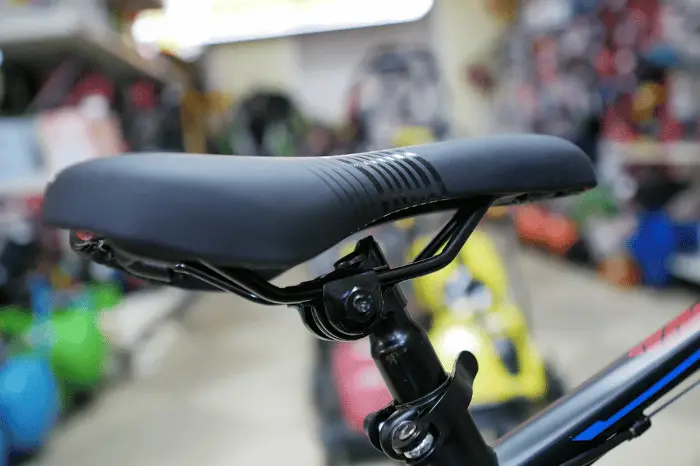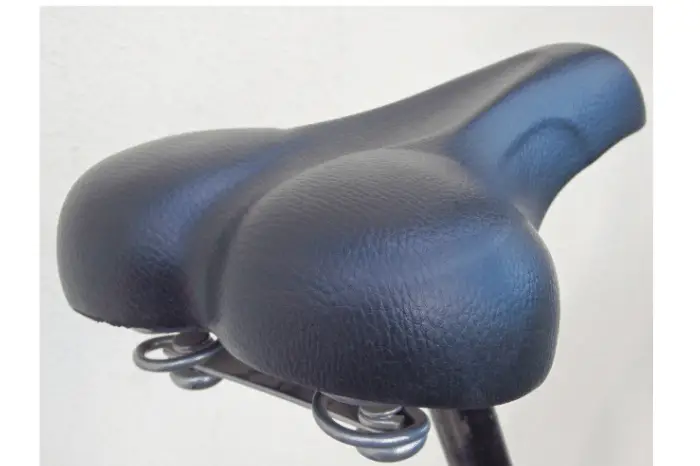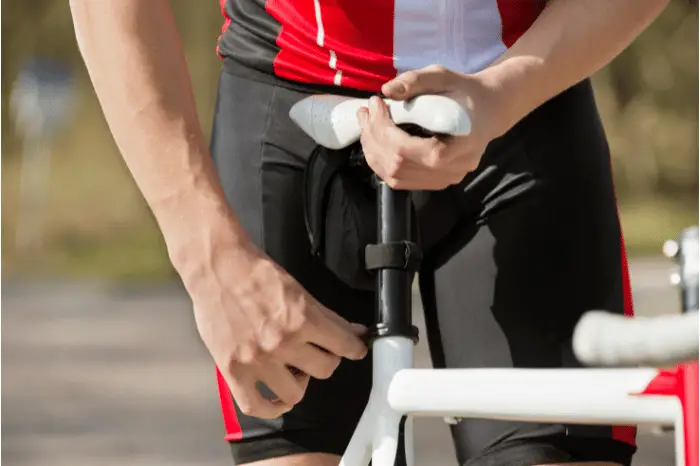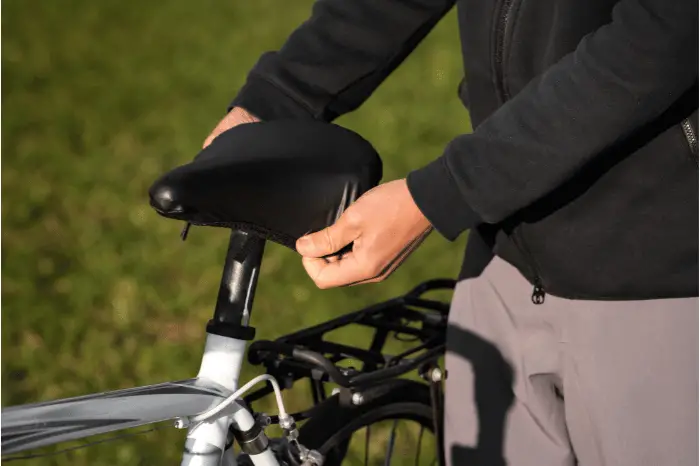
Are you tired of feeling sore and achy after a long bike ride? One of the most common culprits is an uncomfortable bike seat. Luckily, there are several ways to make your bike seat more comfortable and reduce discomfort during your rides.
Understanding bike seat ergonomics is key to making your bike seat more comfortable. Bike seats come in different shapes, sizes, and materials, and finding the right one for you can make a big difference. Additionally, adjusting your bike seat to the correct height and angle can help reduce discomfort and prevent injury.
Choosing the right bike seat is also important for improving comfort during your rides. There are several factors to consider, including the type of riding you do, your body type, and your personal preferences.
In addition to choosing the right seat, there are several additional comfort enhancements you can make to your bike seat, such as adding padding or using padded shorts.
Key Takeaways
- Understanding bike seat ergonomics is key to making your bike seat more comfortable
- Adjusting your bike seat to the correct height and angle can help reduce discomfort and prevent injury
- Choosing the right bike seat and making additional comfort enhancements can further improve your riding experience
Understanding Bike Seat Ergonomics
When it comes to making your bike seat more comfortable, it’s important to understand the ergonomics of the seat. This includes the anatomy of the seat, pressure points and comfort, and material and padding choices.
Anatomy of a Bike Seat
Bike seats are made up of several components, including the shell, rails, and cover. The shell is the base of the seat and provides its shape, while the rails are the metal bars that attach the seat to the bike. The cover is the outer layer of the seat that provides a comfortable surface to sit on.
Pressure Points and Comfort

One of the most important aspects of bike seat ergonomics is understanding pressure points and how they affect comfort. Pressure points are areas where the seat makes contact with your body, and they can cause discomfort or even pain if not properly addressed. Common pressure points include the sit bones, perineum, and pubic bone.
To make your bike seat more comfortable, you should choose a seat that is the correct size and shape for your body type. You should also consider adding padding to the seat to help distribute your weight more evenly and reduce pressure on sensitive areas.
Material and Padding Choices
The material and padding of your bike seat can also have a significant impact on comfort. Some common materials used in bike seats include leather, synthetic leather, and vinyl. Each material has its advantages and disadvantages, so it’s important to choose one that suits your needs.
When it comes to padding, there are a variety of options available, from thin and firm to thick and soft. Generally, thicker padding is more comfortable, but it can also be less supportive and lead to more pressure points. It’s important to find the right balance between comfort and support when choosing a padded bike seat.
By understanding the ergonomics of your bike seat, you can make informed choices about the type of seat that will provide the most comfort for your needs.
Adjusting Your Bike Seat
One of the most important factors in making your bike seat more comfortable is adjusting the seat to fit your body properly. Here are some tips on how to do it:

Height Adjustment
The height of your bike seat is crucial for comfort and efficiency. If the seat is too low, it can cause pain in your knees and make it difficult to pedal. If it’s too high, you may experience discomfort in your lower back and hips. To adjust the height of your seat, follow these steps:
- Stand next to your bike and adjust the seat so that it’s at hip height.
- Sit on your bike and place your feet on the pedals.
- Pedal backward until one of your legs is at the bottom of the pedal stroke.
- Adjust the seat height so that your knee is slightly bent when your foot is on the pedal.
Tilt and Angle Optimization
The tilt and angle of your bike seat can also affect your comfort. If the seat is tilted too far forward or back, it can put pressure on sensitive areas and cause discomfort.
To optimize the tilt and angle of your seat, follow these steps:
- Sit on your bike and adjust the tilt of the seat so that it’s level.
- Adjust the angle of the seat so that it’s comfortable for you. Some people prefer a slight upward angle, while others prefer a slight downward angle.
Fore and Aft Positioning
The fore and aft positioning of your bike seat can also make a big difference in your comfort. If the seat is too far forward or back, it can cause pain in your knees, hips, and back.
To adjust the fore and aft positioning of your seat, follow these steps:
- Sit on your bike and place your feet on the pedals.
- Pedal backward until one of your legs is at the bottom of the pedal stroke.
- Adjust the fore and aft positioning of your seat so that your knee is directly above the pedal axle.
By adjusting your bike seat properly, you can significantly improve your comfort and reduce the risk of pain and injury.
Choosing the Right Bike Seat
When it comes to making your bike seat more comfortable, choosing the right seat is key. Here are some factors to consider when selecting a bike seat:
Types of Bike Seats
There are a few different types of bike seats to choose from, including:
- Road bike seats: These are designed for riders who lean forward and have a more aggressive riding position.
- Mountain bike seats: These are designed for riders who sit more upright and need more support for their sit bones.
- Hybrid bike seats: These are designed for riders who have a more relaxed riding position and need a balance of support and cushioning.
Seat Width and Shape
The width and shape of your bike seat can greatly affect your comfort level. A seat that is too narrow can cause discomfort and pressure points, while a seat that is too wide can cause chafing and rubbing.
Look for a seat that matches the width of your sit bones, which can be measured at a bike shop or using a DIY method.
Additionally, consider the shape of the seat. Some seats have a cutout or channel in the middle to relieve pressure on sensitive areas.
Gender-Specific Designs
Many bike seats are designed specifically for men or women. Women’s seats are typically wider and shorter to accommodate wider hips and a shorter reach to the handlebars. Men’s seats are typically narrower and longer to accommodate a longer reach to the handlebars.
However, not all women need a women’s-specific seat and not all men need a men’s-specific seat. It’s important to try out different seats to find the one that works best for you.
By considering these factors and trying out different seats, you can find a bike seat that is comfortable and supportive for your riding style and body type.
Additional Comfort Enhancements
If you’re looking for additional ways to make your bike seat more comfortable, there are a few options to consider. Here are a few popular ones:
Seat Covers and Cushions
One of the easiest ways to add some extra padding to your bike seat is by using a seat cover or cushion. These are usually made of foam or gel and can be easily attached to your seat. They come in a variety of shapes and sizes, so you’re sure to find one that fits your bike seat.

Padded Cycling Shorts
Another option is to wear padded cycling shorts. These shorts have a built-in chamois pad that provides extra cushioning between you and your seat. They’re designed to wick away moisture and prevent chafing, making them a great choice for longer rides.
Suspension Seatposts
If you’re looking for a more high-tech solution, you may want to consider a suspension seatpost. These seatposts have a built-in shock absorber that helps to smooth out bumps and vibrations, providing a more comfortable ride. They come in a variety of styles and sizes, so be sure to choose one that’s compatible with your bike.
By using one or more of these additional comfort enhancements, you can make your bike seat even more comfortable and enjoyable to ride on.
